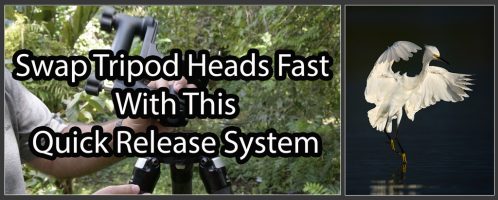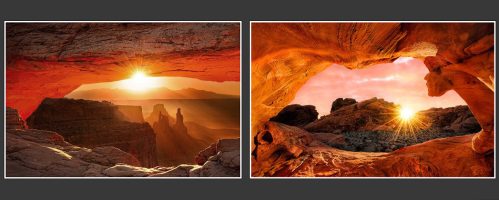Want to know one of the secrets to perfect exposure?
One word: Histograms
Sure, it sounds a little intimidating at first, like something your high school math teacher would force on your tired brain first thing Monday morning, but I promise, it’s way easier than it sounds. Plus, once you learn how to read a histogram, you’ll be able to tell at a glance if you have a proper exposure for your image.
Check out the video for the whole scoop. It looks at why you need them in the first place, what they are, how they are generated, how to read them, and of course some tricks and tips thrown in along the way. Enjoy!
PS…
If you enjoyed this article, I think you’ll REALLY like my e-books, Secrets To Stunning Wildlife Photography and Secrets To The Nikon Autofocus System. They’re filled with hundreds of pages of information just like this. Check it out – click here (hey, it’s free to look 🙂 )




[…] Test – A Crop Camera vs A 1.4x Teleconverter On Full FrameBurst Into The Perfect MomentReading And Understanding Histograms In PhotographyUsing A Gimbal Head On A MonopodAF Help For Tricky, Low Contrast SubjectsHow To Properly Balance A […]
[…] (Highlight Warning)HistogramsNikon AF ModesCopyrightM + Auto ISOAll About Auto ISOBack Button […]
Very helpful video..
I have your Secrets to the Nikon Autofocus System… I will probably buy your wildlife photography book as well. What I would really enjoy reading is a book about Landscapes. Hopefully thats the next one on your list.
Very helpful tutorial for new learner .
I’d like to buy Secrets To The Nikon Autofocus System …. and ….Secrets To Stunning Wildlife Photography …..in paper books. Where or when they will be available?
Steve, thanks so much for the video on histograms. I have been using them without fully understanding clipping and what the histogram height meant. Now after watching your video I feel ready to improve my photos.
I have also have bought both of your books and read them cover to cover.
Keep up the great info flow!!
Hi from Spain. I follow your videos long time ago, I have your books, and will continue doing it. I have learnt a lot with you and I want to empower you to continue in such a way. Thanks
Tomas
I recently came across your website and have since purchased your two ebooks. Enjoy the informative and presentation style of the videos and although the New Zealand wildlife is much different to your country, the advice is still applicable.
Thanks Steve,
Outstanding job as usual! I enjoyed your Secrets to Wildlife Photography. I always learn something new when I read/watch your newsletter. Look forward to your next one. BTW my offer to come to PA and take a photographic ride on the unbelievably beautiful, scenic Susquehanna River in the fall is still good.
Bob Bonney
PA State Conservation Officer
What a pity that you speak too fast, which is a big problem for us people that English is not our native language, and think that even for those who speaks as a mother language may have similar problem to absorb the whole information you give at that speed. Nevertheless thanks for your generosity to share your knowledge.
Walter, since this is a YouTube video you can slow down the speed of Steve’s voice, which will also slow down the video itself. Just after you start the video, and while the video is running, click on the gear icon in the lower right corner to the left of the YouTube logo. In the menu you’ll see the Speed option. To the right of the Speed option click on “Normal” (which is the default). This will open selections to not only speed up the video, but also slow it down. I would try 0.75 first which is three quarters… Read more »
Dean:
Thank you very much for your kind recommendation, I’ll try it.
Best from Chile.
WOW. This is the best talk on histograms I have ever watched. Your graphics and teaching method is magisterial.
Excellent info here, Steve. Thank you for putting this together and take care, my friend!!
Great short course on histograms. I have always liked your videos, to the point but easily understood and just the right length.. Great job.
Steve,
Thanks again for a well produced and informative video. I particularly liked that you mentioned the need to relate the histogram to the tonal values of the scene. I have read and watched a number of tutorials on histograms and very few, if any, do that.
Dave
OMG!!!
Did Mr. Perry just include a service tip for a Canon camera ??? I love it………..!
Now I can subscribe fully to Backcountry Gallery. (insert smiley face) Just kidding……..
Keep up the great work, i do look forward to all the content on your site and learn so much from your experience and knowledge.
Sincerely,
“Chip”
Yup, gotta say, I like the 5D IV – maybe not as much as my Nikons, but I do like it 🙂
Hi Steve, enjoyed the video on histograms. How does Expose To The Right (ETTR), fit into your analysis, particularly to your point regards the tonal range of the scene determining the shape of the “correct” histogram? I know that in a lot of images, not containing a lot of bright white tonality, the histogram can be pushed further to the right by giving additional exposure as long as you are sure not to clip the highlights. For example, I would think the coyote image could have been given additional exposure shifting the histo to the right. Of course you would… Read more »